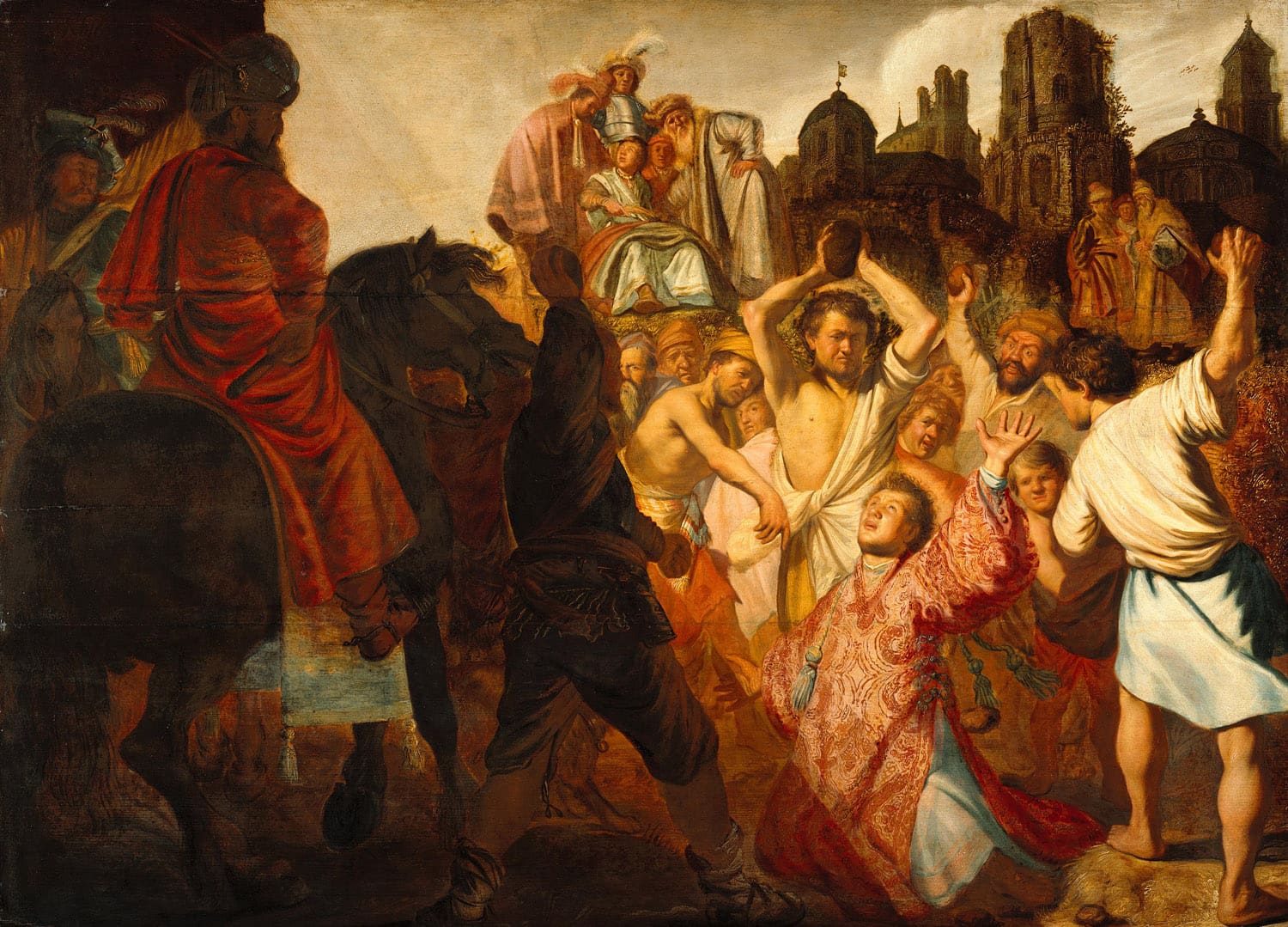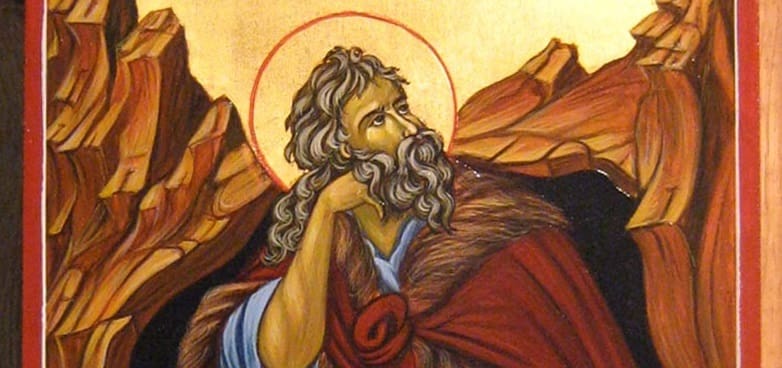Reprinted with permission from The Spirit of the Liturgy (San Francisco: Ignatius Press, 2000), pages 190-4.
The spiritual and bodily meanings of proskynein [i.e., adoration on one’s knees] are really inseparable. The bodily gesture itself is the bearer of the spiritual meaning, which is precisely that of worship. Without the worship, the bodily gesture would be meaningless, while the spiritual act must of its very nature, because of the psychosomatic unity of man, express itself in the bodily gesture. The two aspects are united in one word, because in a very profound way they belong together. When kneeling becomes merely external, a merely physical act, it becomes meaningless. On the other hand, when someone tries to take worship back into the purely spiritual realm and refuses to give it embodied form, the act of worship evaporates, for what is purely spiritual is inappropriate to the nature of man. Worship is one of those fundamental acts that affect the whole man. That is why bending the knee before the presence of the living God is something we cannot abandon.
In saying this, we come to the typical gesture of kneeling on one or both knees. In the Hebrew of the Old Testament, the barak, “to kneel,” is cognate with the word berek, “knee.” The Hebrews regarded the knees as a symbol of strength; to bend the knee is, therefore, to bend our strength before the living God, an acknowledgment of the fact that all that we are we receive from him. In important passages of the Old Testament, this gesture appears as an expression of worship. At the dedication of the Temple, Solomon kneels “in the presence of all the assembly of Israel” (2 Chron 6:13). After the Exile, in the afflictions of the returned Israel, which is still without a Temple, Ezra repeats this gesture at the time of the evening sacrifice: “I…fell upon my knees and spread out my hands to the Lord my God” (Ezra 9:5). The great psalm of the Passion, Psalm 22 (“My God, my God, why have you forsaken me?”), ends with the promise: “Yes, to him shall all the proud of the earth fall down; before him all who go down to the dust shall throw themselves down” (v.29, RSV adapted). The related passage Isaiah 45:23 we shall have to consider in the context of the New Testament. The Acts of the Apostles tells us how St. Peter (9:40), St. Paul (20:36), and the whole Christian community (21:5) pray on their knees. Particularly important for our question is the account of the martyrdom of St. Stephen. The first man to witness to Christ with his blood is described in his suffering as a perfect image of Christ, whose Passion is repeated in the martyrdom of the witness, even in small details. One of these is that Stephen, on his knees, takes up the petition of the crucified Christ: “Lord, do not hold this sin against them” (7:60). We should remember that Luke, unlike Matthew and Mark, speaks of the Lord kneeling in Gethsemane, which shows that Luke wants the kneeling of the first martyr to be seen as his entry into the prayer of Jesus. Kneeling is not only a Christian gesture, but a christological one.
For me, the most important passage for the theology of kneeling will always be the great hymn of Christ in Philippians 2:6-11. In this pre-Pauline hymn, we hear and see the prayer of the apostolic Church and can discern within it her confession of faith in Christ. However, we also hear the voice of the Apostle, who enters into this prayer and hands it on to us, and, ultimately, we perceive here both the profound inner unity of the Old and New Testaments and the cosmic breadth of Christian faith. The hymn presents Christ as the antitype of the First Adam. While the latter high-handedly grasped at likeness to God, Christ does not count equality with God, which is his by nature, “a thing to be grasped,” but humbles himself unto death, even death on the Cross. It is precisely this humility, which comes from love, that is the truly divine reality and procures for him the “name which is above every name, that at the name of Jesus every knee should bow, in heaven and on earth and under the earth” (Phil 2:5-10). Here the hymn of the apostolic Church takes up the words of promise in Isaiah 45:23: “By myself I have sworn, from my mouth has gone forth in righteousness a word that shall not return: ‘To me every knee shall bow, every tongue shall swear.’” In the interweaving of Old and New Testaments, it becomes clear that, even as crucified, Jesus bears the “name above every name”—the name of the Most High—and is himself God by nature. Through him, through the Crucified, the bold promise of the Old Testament is now fulfilled: all bend the knee before Jesus, the One who descended, and bow to him precisely as the one true God above all gods. The Cross has become the world-embracing sign of God’s presence, and all that we have previously heard about the historical and cosmic Christ should now, in this passage, come back into our minds. The Christian liturgy is a cosmic liturgy precisely because it bends the knee before the crucified and exalted Lord. Here is the center of authentic culture—the culture of truth. The humble gesture by which we fall at the feet of the Lord inserts us into the true path of life of the cosmos.
There is much more that we might add. For example, there is the touching story told by Eusebius in his history of the Church as a tradition going back to Hegesippus in the second century. Apparently, St. James, the “brother of the Lord,” the first bishop of Jerusalem and “head” of the Jewish Christian Church, had a kind of callous on his knees, because he was always on his knees worshipping God and begging for forgiveness for his people (2, 23, 6). Again, there is a story that comes from the sayings of the Desert Fathers, according to which the devil was compelled by God to show himself to a certain Abba Apollo. He looked black and ugly, with frighteningly thin limbs, but, most strikingly, he had no knees. The inability to kneel is seen as the very essence of the diabolical.
But I do not want to go into more detail. I should like to make just one more remark. The expression used by St. Luke to describe the kneeling of Christians (theis ta gonata) is unknown in classical Greek. We are dealing here with a specifically Christian word. With that remark, our reflections return full circle to where they began. It may well be that kneeling is alien to modern culture—insofar as it is a culture, for this culture has turned away from the faith and no longer knows the One before whom kneeling is the right, indeed the intrinsically necessary gesture. The man who learns to believe learns also to kneel, and faith or a liturgy no longer familiar with kneeling would be sick at the core. Where it has been lost, kneeling must be rediscovered, so that, in our prayer, we remain in fellowship with the apostles and martyrs, in fellowship with the whole cosmos, indeed in union with Jesus Christ himself.


